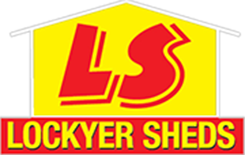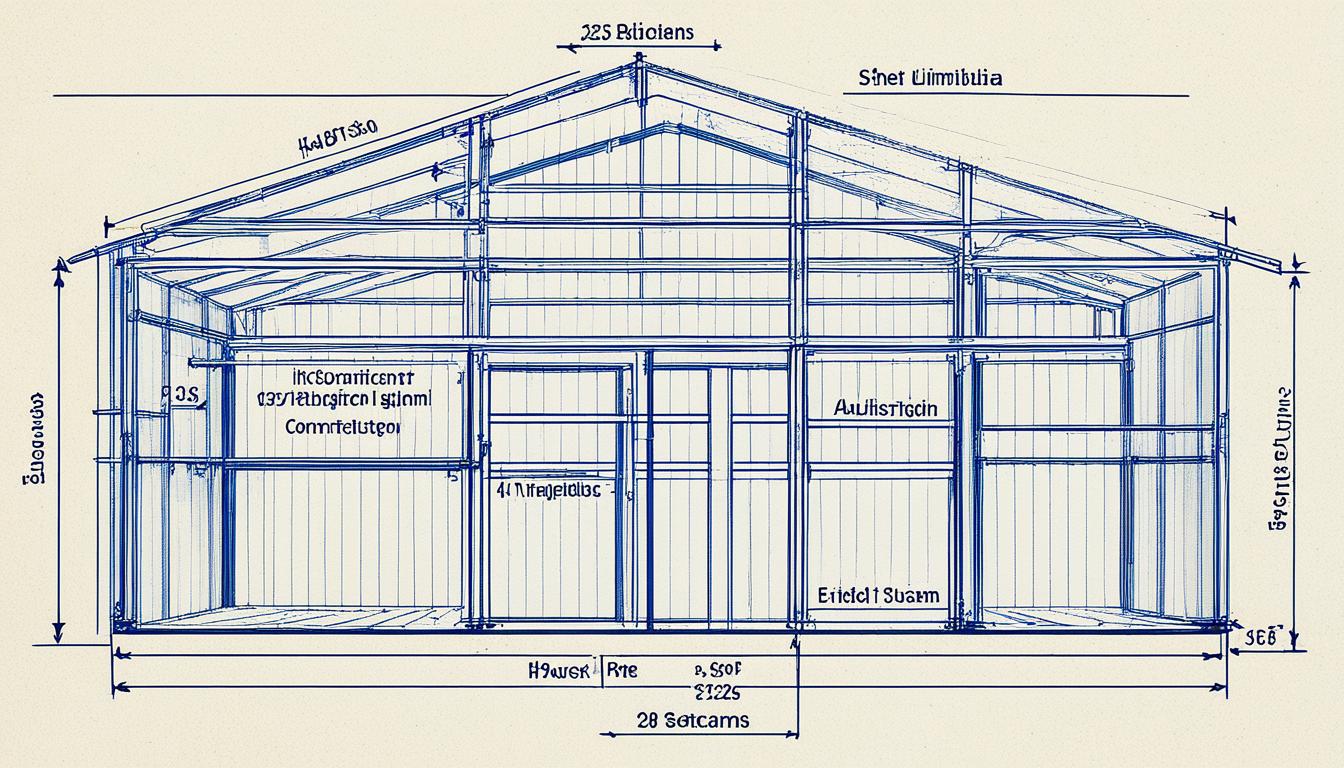Thinking about building a shed or carport in Australia? It’s important to know the shed construction laws in your area. The rules for building a shed can vary a lot. Skipping the need for shed permits and other backyard shed requirements might cause big problems.
There are many rules to follow, from outbuilding zoning laws to shed construction guidelines. This guide helps you get your shed project right. Lockyer Sheds has over 45 years’ experience with sheds in Australia. They teach how to stick to the regulations.
Understanding Shed Construction Regulations
Building a shed means following different rules depending on where you are in Australia. Each state has its own set of rules. These include needs from the national Building Code of Australia for sheds. You need to meet these to have your shed counted as a Class 10a building.
It’s essential to look at what your local council says before building. Even though there might be some common rules,check with your area first.
State and Territory Variations
Rules for building sheds are different in places like NSW compared to QLD, VIC, SA, WA, NT, and TAS. In New South Wales, you might not need a special approval for your shed.
This is if it’s under 20m² in cities or 50m² in the countryside. It also has to follow rules about where it goes, what it’s made of, and how safe it is.
Council Approval Requirements
Most places in Australia allow sheds up to 10m² without a special permit. But, this can change based on the shed’s height, what it’s made of, and where you’re putting it. In NSW, you can avoid needing an approval if you already have two other buildings on your property.
- For approvals, you usually need to show your shed plans to the local council. They’ll make sure it follows the right rules.
- Getting help from a private certifier might cost extra in New South Wales, but it can make getting approvals easier.
- Shed builders or retailers can be a big help. They know what you need to do and can steer you in the right direction for permits.
Shed Construction Laws
In Australia, building a shed on your land comes with rules. You’ll have to follow the Building Code of Australia and shed design standards. These cover the materials and how the shed looks. You must also consider property zoning shed rules and local overlays shed regulations.
Building Codes and Standards
The Building Code of Australia (BCA) is key for shed safety. Your shed must fully follow the BCA to be okay. It must fit under Class 10a rules, for sheds and other non-living structures.
Your local council could add more rules you must know about. It’s smart to talk with council staff to learn all your area’s rules.
Zoning and Property Constraints
Where your property is zoned affects your shed. Rules are stricter in living areas than countryside or industrial zones. Overlays, like bushfire or heritage areas, add extra rules about materials and look.
- Check your council’s zoning maps and plans for your area’s property zoning shed rules and overlays shed regulations.
- Some councils might need a permit or certificate for the shed’s size and zoning.
Before building your shed, getting council approval is a must. Avoiding this can lead to fines or worse. Always start by doing things right.
Shed Size and Height Restrictions
Thinking of building a shed in Australia? You need to know the shed size limits. There’s a maximum shed area you can build without a permit. Most places allow sheds up to 10m² area without paperwork. They must follow shed height restrictions and boundary setbacks sheds rules.
In New South Wales, you don’t need approval for a shed. This is if it’s the only separate building, not a shipping container. It must follow these rules for shed floor area:
- Under 20m² in residential areas
- Under 50m² in rural areas
These sheds also can’t be over 3 meters tall. They need to be a certain distance from property lines. Plus, they should meet fire safety and shiny surface rules. Remember, there might be more rules. Sheds cannot stick out past the main building’s front or be from brick.
Although 10m² is often the size where no permit is needed, rules can differ. For instance, South Australia might allow up to 15m² sheds without council consent based on certain criteria.
Make sure to check with your local council. They can tell you about shed height restrictions, and boundary setbacks sheds in your area. It’s important to follow all the rules before starting your shed project.
Shed Placement and Boundary Setbacks
Setting up a shed involves following local council’s shed boundary distance rules and shed setback from boundaries regulations. These rules say how far your shed should be from your property’s edges. They make sure your shed stays safe and keeps neighbors happy.
Frontage Setback Requirements
The frontage setback shed guidelines are very important. They decide the closest your shed can be to the front of your land. Sheds usually must be set back from the street to keep the area looking good.
Side and Rear Boundary Clearances
Local councils have strict shed side boundary clearance and rear boundary shed placement rules. For example, in New South Wales, a shed needs at least 900mm from the side and back. These rules stop fights with neighbors and make sure there’s room for services when needed.
Keep in mind, the needed distance can change based on your shed’s size and use. Bigger sheds or those in special land types might need more space. This is for vehicle access and avoiding problems with neighbors.
Additionally, councils look at how a shed might block sun or views for others. Following all these rules makes it more likely your shed will get the go-ahead. This avoids troubles with the people next door.
Bushfire Prone Area Regulations
Living in a bushfire-prone area means following specific bushfire shed regulations. The Building Code of Australia (BCA) says sheds must resist bushfires well against Class 10a buildings. This rule keeps the fire risk low between sheds.
Bushfire Attack Level Assessment
To ensure a shed is safe from bushfires, the Bushfire Attack Level (BAL) must be checked. Sheds are given one of six BAL ratings under the Australian Standard AS3959. Each rating shows how much heat the shed can withstand and how to best build it.
Construction Materials and Design
After finding out the BAL rating, choose fire-resistant shed materials and designs. This means using special cladding, ember protection screens to keep embers out, and sealing any openings. The design aims to stop fire from spreading and protect against heat and embers.
If the shed is more than six meters away from your home and not attached, the rules for bushfire protection might be less strict. Still, using fire-resistant materials and designs is a smart move for extra safety.
Following bushfire shed regulations and creating a bushfire compliant shed design can make your home safer. It helps reduce the risk of fire damage in areas prone to bushfires.
Rainwater Runoff and Drainage
When building a shed, it’s crucial to manage rainwater runoff from the roof properly. In NSW, you must direct the shed roof water runoff into the stormwater drainage system. This follows the state’s shed drainage system compliance rules.
Local councils may encourage rainwater tank shed systems for storing runoff. They might say where the stormwater can go. You need a good drainage plan, meeting council’s stormwater management guidelines, for shed building approval.
Key Drainage Requirements
When it comes to rainwater runoff and shed drainage, certain rules apply:
- The overflow from the shed has to link with the stormwater system without causing problems for your neighbours.
- Rainwater tanks need a screened rain head, first-flush device, and anti-mosquito measures.
- Any pump enclosures for tanks should reduce noise for your neighbours.
- Don’t connect your rainwater tanks to the mains water without official approval.
Following these shed roof water runoff rules and stormwater drainage shed regulations makes sure your shed project is up to scratch. It helps keep your property and the environment safe.
Shed Construction Approval Process
Working through the shed construction approval process is key to making sure your project is all good with the rules. Usually, you need to send in a development application and get a construction certificate or complying development certificate from the council or a private checker.
Building Permit and Approval Process
First off, check if your shed idea needs the council’s okay. In Western Australia, small sheds for home use under 10 square meters might not need this if they’re in the right spot. Still, council approval for shed construction is usually a must in Australia.
If you do need the council’s nod, you have to send in a development application. This checks if you follow the local zoning rules. You also need a construction certificate to make sure your shed meets the Building Code of Australia.
Documentation and Plan Submissions
You’ve got to offer up lots of details to get the right permits. This includes design plans, material lists, what you plan to use the shed for, how it’ll be built, and if it’s safe.
- Design plans and drawings
- Specifications and materials list
- Statement of purpose and intended use
- Engineering details and calculations
- Build process plans
Sometimes, a complying development certificate might help if you’re working with a private checker. It could mean you don’t need a separate development app or construction certificate. But, this option might have strict rules.
Knowing what kind of building your shed is, like it’s in the Class 10a group in Australia, is crucial. This class shows how much permission you need. Also, trying to get the okay after you’ve built your shed is really hard. And, not having approval can cause big issues if you sell your property.
Aesthetic and Appearance Regulations
Building a shed means you must follow your local council’s rules. They set guidelines for shed design and style. These rules make sure your shed looks good next to your home and doesn’t stand out too much. Your council will tell you what your shed can look like in terms of materials, colours, and styles. This helps keep the whole area looking nice and similar.
About 35% of people buying sheds want ones that fit their home’s style. This shows how important it is for your shed to look right. It should be part of the whole look of your place. Following the council’s rules will help you avoid problems. Plus, it makes your shed add to your home’s beauty.
At Lockyer Sheds, we get the rules and can help make a shed that’s just right for your area. Our team knows how to make your shed follow the rules and still look good. We can help with the whole building process. So, with us, you know your shed will not only be useful but also make your property look better. We serve places like Toowoomba, Gatton, and Brisbane, helping you fit in beautifully.

